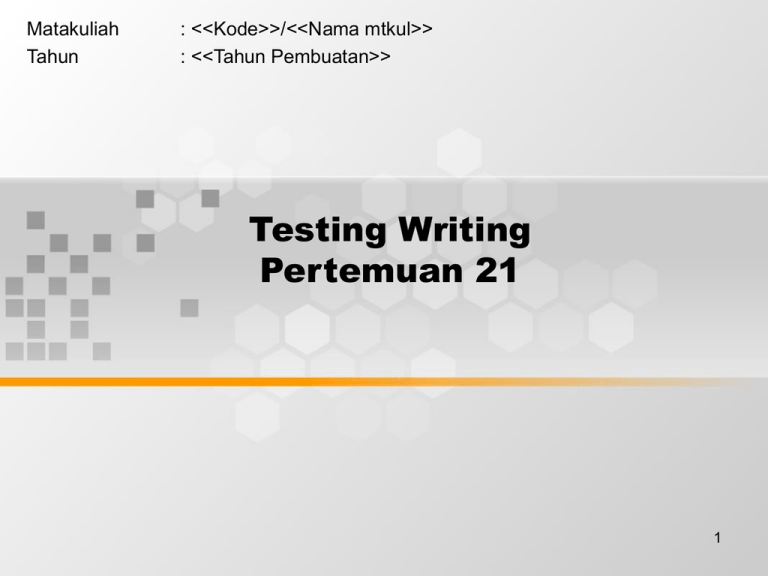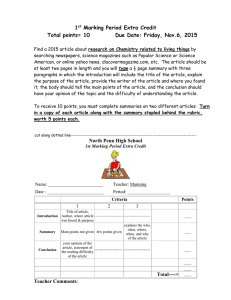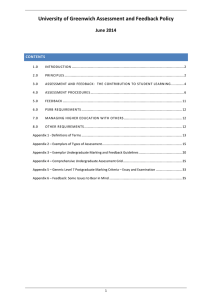Testing Writing Pertemuan 21 Matakuliah : <<Kode>>/<<Nama mtkul>>
advertisement

Matakuliah Tahun : <<Kode>>/<<Nama mtkul>> : <<Tahun Pembuatan>> Testing Writing Pertemuan 21 1 TESTING WRITING It is very common for “writing“ test to focus on grammar. This is because it is easy to test grammar – there are answers, marking is easy, etc. If tests only focus on grammar, they will not show how well students can write in English to express meaning. If we want to encourage students to develop writing skills, then it is important to give tests in which students have to express meaning in written sentences, not merely write correct grammatical forms. 2 TWO DIFFERENT APPROACHES for assessing writing ability 1. INDIRECT METHODS : Writing can be divided into discrete levels : grammar, vocabulary, spelling and punctuation. These elements can be tested separately by the use of objective tests. 2. DIRECT METHODS : With a more integrative and direct approach to the testing of writing, we can incorporate items which test a candidate’s ability to perform certain of the functional tasks required in the performance of duties in the target situation (essay type of tests). For example : for doctors in hospital this might involve writing a letter to another doctor ( local GP) about a patient’s case based on the printed forms/notes. 3 MARKING FREE WRITING Free writing tests have two disadvantages : (1). Because students are free to write what they like, they are likely to make many mistakes of different kinds. So the tests will tell us very little about what they can and cannot do, or how much progress they have made. (2). Because there is no single correct answer, free writing tests are difficult to mark precisely and marking takes a long time. 4 Different ways of marking them : (1). Negative marking : We count all the mistakes the student has made, and subtract, say, half a mark for each mistake. (2). Positive marking : We give, say, three marks for each sentence. If a student has written the sentence more or less correctly, they are given three marks; if they have made some mistakes but the sentence can be easily understood, they are given two marks; if the sentence is very hard to understand, they are given one mark. Notes : - Positive marking gives more emphasis to the content and meaning the student is trying to express; - By giving a positive mark, we reward students for what they can do rather than “punish” them for what they cannot do; - Obviously, this will have a better effect on their attitude to learning. 5



